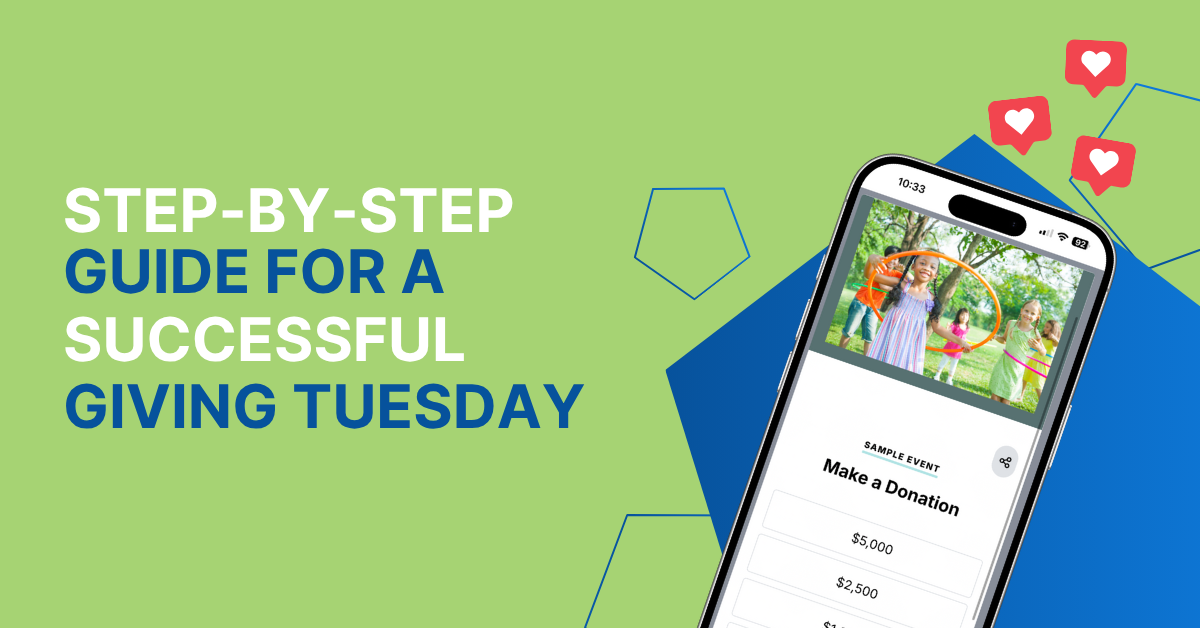
Creating an Event Microsite? 7 Expert Tips for Success
February 12, 2025Are you looking for a unique way to innovate your event marketing approach and improve the online donor and attendee experience? Event microsites, a practical, easy-to-use marketing tool, can help you do just that.
According to Kanopi’s guide to charity microsites, these sites comprise a single web page or cluster of pages that complement an existing website. An event microsite can increase awareness of your event, act as a supplementary lead magnet, and offer supporters a new, engaging way to interact with your organization.
We’ve compiled the following tips to help you design an event microsite that accurately reflects your event while boosting registration numbers.
1. Narrow the site’s scope.
Your microsite will offer a more in-depth look into one of your organization’s most important events. Therefore, it should contain unique content that differs from what’s already on your main website.
For instance, if you’re creating a microsite to market your healthcare nonprofit’s annual auction, you don’t need to include a long “about us” page that recounts your organization’s history. If audience members have made it to your microsite, you can rest assured that they already understand your organization’s mission.
Infusing your microsite with tailored, unique content ensures it offers visitors everything they need to get involved, including the event’s logistics and registration form. Visitors won’t get distracted by other links or non-event-related content.
Additionally, incorporating unique content in your event microsite avoids the risk of having duplicate content on your microsite and main website. Duplicate content can negatively impact the search engine optimization (SEO) rankings of both websites.
2. Follow UX best practices.
Just because your event microsite isn’t as complex or prominent as your main website doesn’t mean you should neglect the website design best practices that enable a streamlined browsing experience. Specifically, we’re talking about crafting a positive, engaging user experience (UX).
By optimizing even the small details that create a better user experience, you can give your visitors a positive first impression.
Keep these UX best practices in mind:
- Incorporate simple navigation. Your microsite shouldn’t have more than a handful of pages and may even consist of a single web page. Use menu links and call-to-action buttons to quickly direct visitors to different pages or sections, such as your sign-up form.
- Prioritize accessibility. Ensure all images have descriptive alternative text and videos have accurate captions. Your visual elements should also have sufficient color contrast and no flashing or strobing elements.
- Tailor content to your audience. Your event might have a different audience than your nonprofit’s main website. For instance, you might be trying to engage high school and college-age supporters with a young activists’ event. If so, incorporate short videos, a social media feed, and casual language into your microsite to appeal to a younger target audience.
- Optimize for mobile devices. You’ll likely share your microsite across your social media pages and emails, which many supporters will access using mobile devices. Therefore, your microsite should offer a responsive design that automatically adjusts to fit different screen sizes.
These UX tips also apply to your microsite’s forms. For example, your event registration form should be streamlined and simple. It should only ask for necessary information, such as attendees’ names and any required payment or donation information.
Your form should also be accessible, with descriptive labels, clear instructions, and keyboard-navigable content. This way, your microsite will facilitate an easy event registration experience for all visitors.
3. Brand the site to your organization.
Even though your microsite covers information different from your main website, it should still look like it belongs to your nonprofit. This conformity ensures you don’t confuse existing supporters who recognize your organization’s and event’s branding.
That’s why we recommend designing your microsite with variations of your organization’s main brand elements to promote brand recognition and trust. For instance, you might use secondary colors from your brand’s color palette or your secondary font style.
Within this framework, you can still incorporate unique elements into your event’s branding. For example, an event-specific logo or image style might convey a more relaxed, laid-back tone than your main branding elements. You can even create an event tagline to help strengthen your microsite’s branding. Review Getting Attention’s nonprofit tagline guide to help develop a catchy, concise, and relevant event tagline.
A strong brand helps raise event awareness and get supporters excited about attending. Plus, if your event brand is unique and appealing, attendees will be more likely to purchase event merchandise, such as t-shirts or mugs.
4. Incorporate SEO strategies.
You must promote your microsite to the widest possible audience to earn more event sign-ups. As far as online marketing is concerned, SEO is one of the most valuable strategies for reaching prospective attendees with your microsite.
When your microsite is optimized for search engines, it has a greater chance of appearing higher on search engine results pages, giving your event greater visibility. Keep these tips in mind when planning your SEO strategy:
- Incorporate relevant keywords. Conduct keyword research to identify high-traffic search terms relevant to your event. For instance, if you’re hosting a 5K color run fundraiser, you might include the keyword “color runs in [your city’s name]” to help your site stand out in local search results.
- Proofread your content. One of the most important SEO factors that search engine crawlers look for is whether a page offers useful, accurate information for visitors. Double-check your microsite’s content to ensure it’s up-to-date, streamlined, and error-free.
- Reduce site load speed. Your site’s load speed is another central SEO consideration. Don’t overload your microsite with too many code-heavy multimedia elements, such as large video files, which increase page load time.
- Don’t make a microsite just for SEO purposes. You might be tempted to create a handful of microsites to drive traffic back to your organization’s main website. However, having too many microsites can spread your content too thin across multiple locations, making it less valuable overall. Search engines reward websites with high-quality, robust content, so it’s more effective to put the work into optimizing a single event microsite.
SEO strategies will help you reach a more targeted audience interested in your content since they’re researching relevant keywords. This tactic can add dimension to your online marketing campaign, supporting your social media and email marketing efforts.
5. Get creative.
As a designer, how often do you have the opportunity to test your designs in a lower-stakes environment that still reflects reality? Event microsites offer the unparalleled opportunity to take risks and find new ways to excite and inspire your audience through design.
Try out innovative and unique design strategies or new types of content that you’re not ready to roll out on your main website just yet. For example, you might incorporate one or more of the following elements into your microsite:
- Videos
- Interactive slideshows
- Polls
- Quizzes
- Social media feeds
- Live chat
Use website analytics to assess the effectiveness of these elements. For instance, you might analyze key performance indicators such as the average time spent on each microsite page, the click-through rate for different links, or conversion rates for pages like your event registration page or online donation page.
Then, you can determine which elements you want to incorporate into your main website or adjust for greater effectiveness within your microsite.
6. Integrate the site into your event marketing strategy.
Once you’ve created your optimized microsite, share it across your social media pages and email newsletters to drive traffic and ensure your audience has all the event details they need. Here are a few ideas for integrating the site effectively into other marketing opportunities:
- Social media: Share links to your microsite in social media posts and your bio or profile page. Let followers know they can use the site to access all event information, registration forms, and other necessary details.
- Email: Send an email series leading up to the event, letting subscribers know what it will entail and how to sign up. Include call-to-action (CTA) buttons that lead directly to your mobile-optimized event sign-up page.
- In-event resources: Your microsite can also come in handy during the event itself. For example, if you’re hosting a silent auction, your microsite could include information about using your mobile bidding functionality. You could also use QR codes to encourage event attendees to visit your microsite during the event to make additional donations.
You could even link to your event microsite in physical event marketing materials, like flyers or postcards. Include a QR code on these materials that audience members can quickly scan using their mobile devices to access the site. A multichannel marketing approach with your microsite helps reach a broader audience, boosting event RSVPs.
7. Maintain the site over time.
Whether you’re working on your primary nonprofit website or microsite, diligent nonprofit website maintenance is key to long-term viability. Use these strategies to ensure your microsite remains a reliable resource for supporting events year after year:
- Run frequent security updates. Deploy security patches and content management system (CMS) updates as soon as possible to protect users’ data.
- Collect feedback from users. Incorporate a short survey or poll into your website to gather input from visitors about the user experience. Ask questions about your site’s usability, design, accessibility, and other features. Use visitors’ insights to guide your website updates.
- Track performance over time. Monitor metrics such as bounce rate, traffic to important pages, and conversion rates. Proactively address potential performance issues before they snowball into larger problems.
Take a continuous improvement approach to maintaining your event microsite. This strategy involves making smaller, more frequent changes to the site rather than large updates all at once. Continuous improvement keeps your site healthy and ready for your next event.
With these strategies, you can create an event microsite that bolsters your event marketing campaign and boosts registration numbers. A well-designed, creative, informative event microsite can even drive new supporters to your event, expanding your reach and enhancing your ability to achieve your event goals.
Get The Latest Updates
Subscribe To Our Monthly Newsletter
No spam, notifications only about new products, updates.
Become a subscriber
Subscribe to our blog and get the latest updates straight to your inbox.

